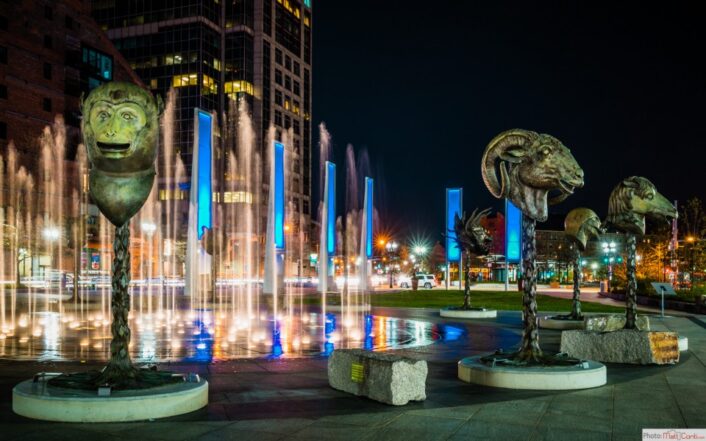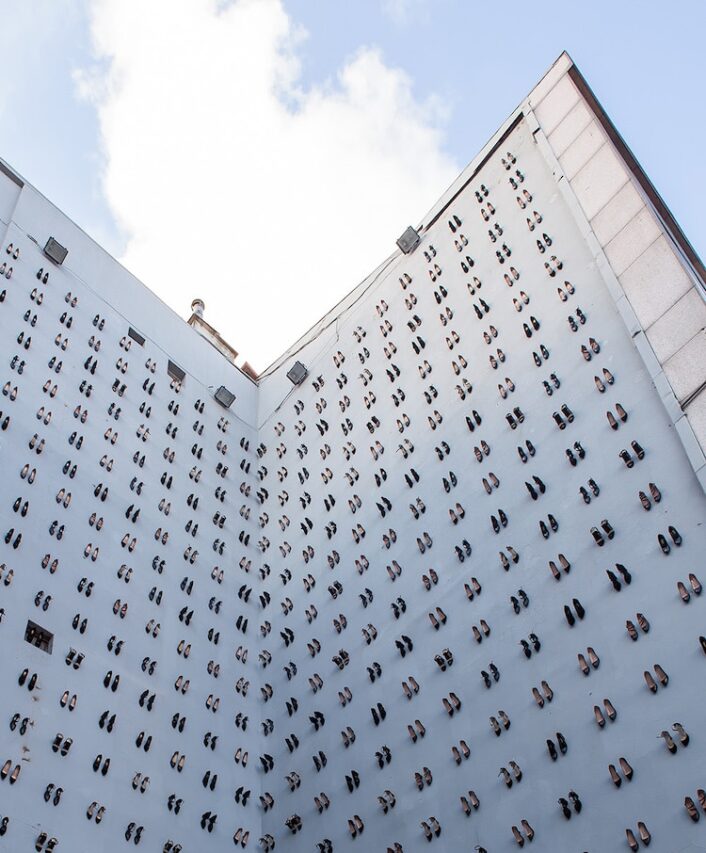Culture
Safe Passage?
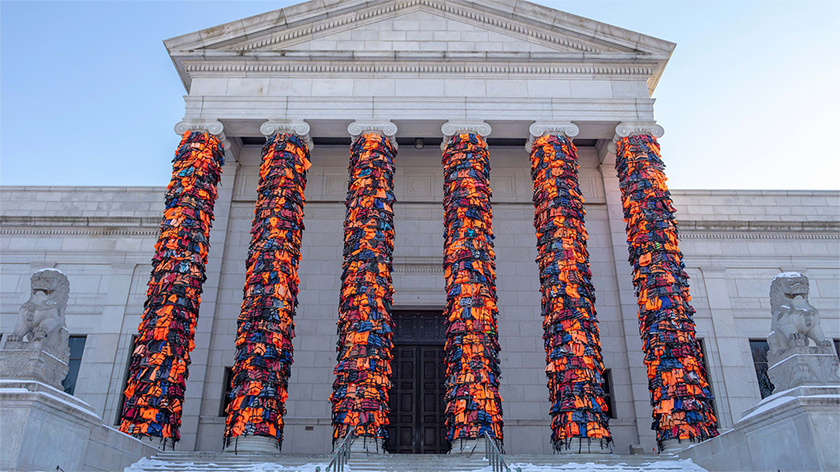
Minneapolis marks the installation’s United States debut.
Image courtesy of: CNN
The international star from China has done it again. Ai Weiwei recently covered the grand columns of the Minneapolis Institute of Art with 2,400 life jackets that, in a previous life, were used by refugees making their way from Turkey to Greece in search of asylum. The life vests which were given to Weiwei by authorities in Lesbos, Greece and Weiwei dreamed up “Safe Passage” as a way to shine a light on the plight of these people. Those vests are the first thing visitors see as they approach the building’s entrance.
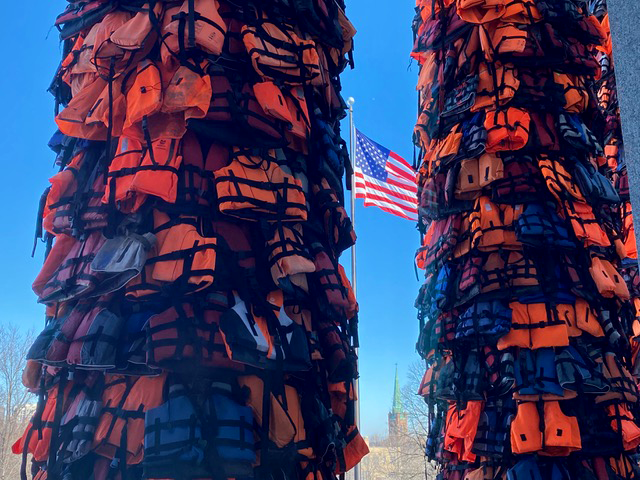
The neoclassical columns are flanked by two stone guardian lions. The installation was unveiled in February 2020.
Image courtesy of: Minn Post, photographed by: John Whiting
“Safe Passage” first debuted in Berlin in 2016 and has since traveled to numerous European cities. When originally installed at the Berlin Konzerthaus, it was the height of the Syrian Civil War and nearly 1 million people landed on the island of Lesbos. The installation is a striking critique of how Europe handled the refugee crisis four years ago.
The irony is that authorities gave the discarded life jackets to Weiwei, a refugee himself. The artist hopes that the audience will take a minute to think about migration, immigration, statelessness, and the dangers refugees face. Futhermore, the feelings of uncertainty and hopelessness are emotions that come to the surface, along with feelings of abandonment, isolation, and despair.

Perhaps surprisingly, Minnesota has the largest refugees per capita of any state in the country.
Image courtesy of: Pioneer Press, Twin Cities, photographed by: Scott Takushi
“Safe Passage” however, is not a traveling installation. The Minneapolis Institute of Art brought the installation in on its own, along with works from two other artist groups. Those three works are part of a larger exhibition called, “When Home Won’t Let you Stay: Art and Migration.”
The museum’s curator and head of contemporary art, Gabriel Ritter, said “My hope is that this does stop people in their tracks and force people to think, and does implicate people in the decisions they make. Because here in Minnesota, these are very much our friends, our neighbors, the people we live with as part of our communities.”
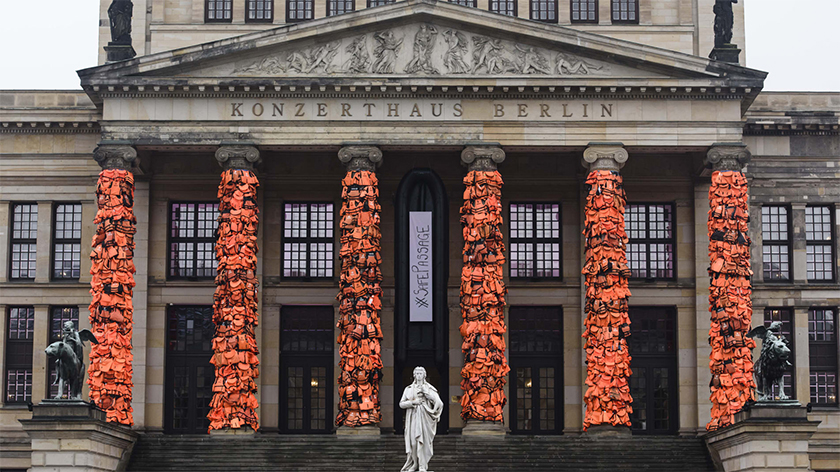
The Berlin installation used 14,000 discarded life jackets.
Image courtesy of: CNN
In Berlin, where the installation debuted, the effect was even more striking. At Berlin’s Konzerthaus, Weiwei’s team began wrapping the discarded life vests around the enormous pillars overnight. At the exact time that the installation debuted, the 19th-century music venue was home to the Cinema for Peace gala. The big event marked the halfway point of Berlin’s annual “Berlinale Film Festival.” Knowing that many Hollywood and international stars and film industry figures would be in the German capital at this time, the media-savvy artist timed the unveiling perfectly!
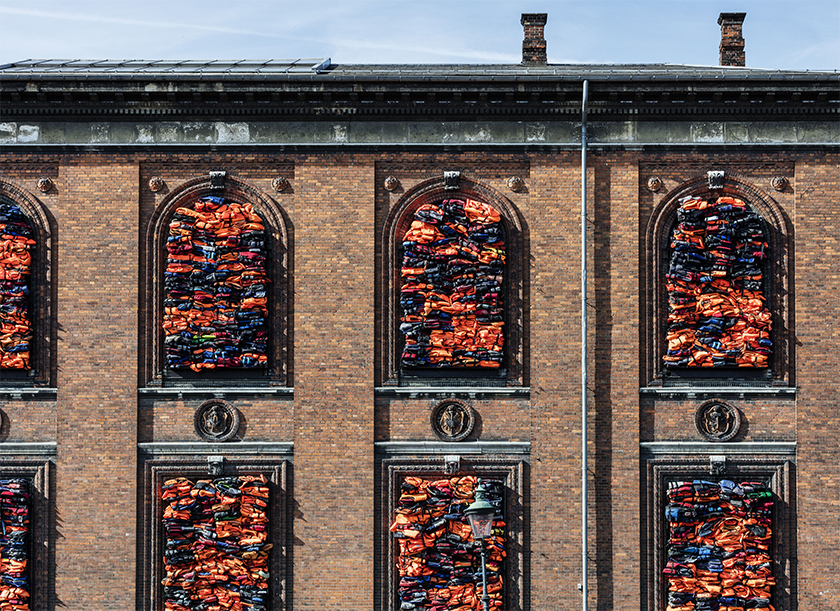
Life jackets overtook the windows of the venue.
Image courtesy of: Public Delivery, photographed by: Andres Sune Berg
Never shying away from controversy, Weiwei is unapologetic about his work. He said the project came to mind after reflecting upon a similar piece he did using thousands of backpacks to illustrate the mass death accounts of school-children following the 2008 Sichuan, China earthquake.
Fair enough.

